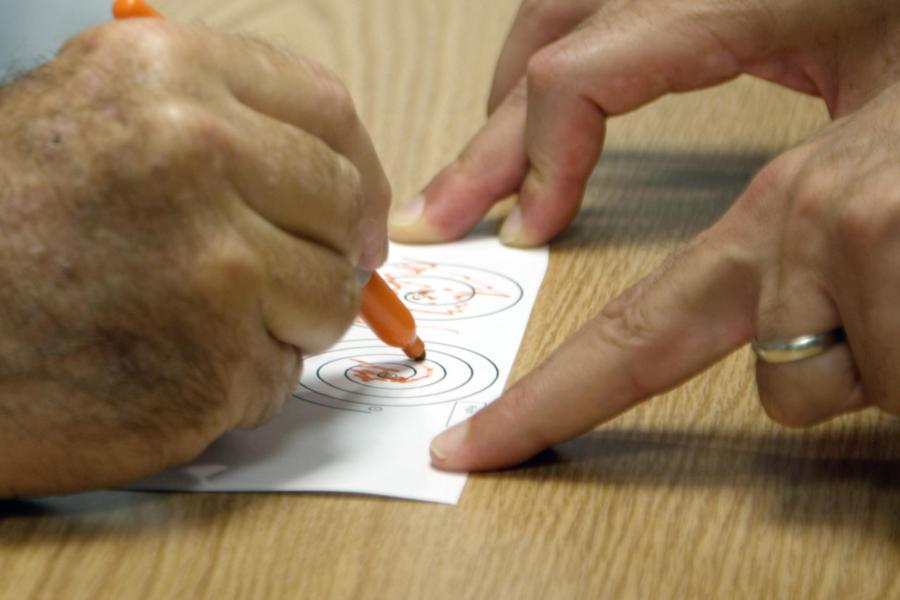Nearly 70% of Parkinson’s patients who received a high-tech, scalpel-free procedure to ease movement problems caused by Parkinson’s disease responded positively to the treatment, according to results of the major international trial recently published in the prestigious New England Journal of Medicine.
University of Virginia neurosurgeon Dr. Jeff Elias and collaborators used focused ultrasound to target an area deep within the brain called the globus pallidus. The researchers wanted to see if the focused sound waves could improve trial participants’ ability to move and reduce the unwanted shaking and rigidity associated with Parkinson’s.
Of 69 patients receiving the procedure in the randomized trial, almost 70% responded positively to the treatment. Of those, 39 continued to see significant benefits three months later and 30 continued to see benefits a year later.
Researchers say the procedure could be useful for patients who are ineligible or unwilling to receive an alternative surgery that implants electrodes deep in the brain to help manage symptoms.
The focused-ultrasound trial results were released before publication to the federal Food and Drug Administration, which expanded its approval of the technology for the treatment of Parkinson’s disease in 2021.
The procedure, however, is a treatment and not a cure.
“This study is promising for patients with Parkinson’s disease and other neurological conditions. Ultrasound was precisely focused deep inside the brain to alter one of the abnormal circuits of Parkinson’s disease,” Elias said. “But it is important to understand that the treatment improved the neurological symptoms of [Parkinson’s disease] and did not alter its course. Ultimately, we hope to someday cure [Parkinson’s disease].”
About Focused Ultrasound
The procedure focuses sound waves inside the brain to disrupt faulty brain circuits. The minimally invasive procedure does not require incisions or opening the skull and is guided by magnetic resonance imaging, or MRI.
Side effects reported by treatment recipients included trouble speaking, difficulty walking and loss of taste. The loss of taste and difficulty walking were mild and resolved on their own. One participant continued to experience slurred speech a year after the procedure, the researchers report.
The Parkinson’s research team consisted of Vibhor Krishna, Paul S. Fishman, Howard M. Eisenberg, Michael Kaplitt, Gordon Baltuch, Jin Woo Chang, Wei‑Chieh Chang, Raul Martinez Fernandez, Marta del Alamo, Casey H. Halpern, Pejman Ghanouni, Roberto Eleopra, Rees Cosgrove, Jorge Guridi, Ryder Gwinn, Pravin Khemani, Andres M. Lozano, Nathan McDannold, Alfonso Fasano, Marius Constantinescu, Ilana Schlesinger, Arif Dalvi and Elias.
Elias is a consultant for Insightec, the manufacturer of the focused ultrasound technology; a full list of the authors’ disclosures is included in the paper.
Financial support for the Parkinson’s trial was provided by Insightec.
To keep up with the latest medical research news from UVA, subscribe to the Making of Medicine blog.
Media Contact
Article Information
July 3, 2025






